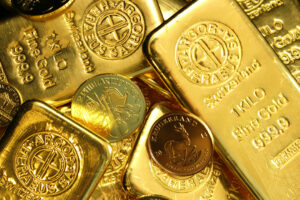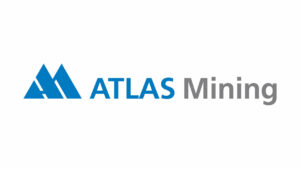Central Banks are the newest HODLers of gold

A FEW WEEKS AGO, when the gold price hit a record high, no one besides a few gold bugs seemed to care. Bitcoin also hit a record high. Everyone cared. Proof came in the personal finance pages of the UK newspapers. The FT had a piece on investing in crypto miners, a long read about what crypto still gets wrong and a cry of pain for UK investors denied the right to hold Bitcoin ETFs. The Telegraph had almost a full page on how to buy. Bitcoin also made it into the Market Report section of the Daily Mail and got good exposure in the Times too — with another cry of pain for UK investors and the fusty bureaucrats who won’t let them get easy exposure to the asset of the century.
Unless I missed it, none of these papers had an article on gold. In March, it rose 9.1% (against 14% for Bitcoin and 3% for global equities) and this week the yellow metal hit yet another record high again to a remarkable lack of interest.
I get it. Gold isn’t digital; it doesn’t have a growing gang of Twitter (or X) evangelists or its own emoji; and it isn’t new money. It’s very old money — one of the oldest there is. In a quick trip to the Fitzwilliam Museum in Cambridge last week I saw a few gold coins introduced by Croesus, the King of Lydia, in about 550 BC, a gold coin minted to mark the Olympic Games celebrated in Macedonia in 242, a Sicilian gold quarter-dinar from the 970s and a couple of gold muhrs struck by the Agra mint in 1619. You get the picture. Very old money. But that you are more likely to see actual gold coins in a museum than in your purse doesn’t mean it doesn’t matter. For proof, look at who is buying gold today.
It isn’t the retail investor in the west.
A good proxy for gauging ordinary investor interest is flows into global gold ETFs. And according to the World Gold Council these collectively saw outflows for nine months in a row until the end of February. This year alone outflows have added up to around $5.7 billion, with the US and Europe seeing the fastest pullback and the collective holdings of the ETFs being around 20% below their level of October 2020. There are some signs that this anti-gold vibe is bottoming out. February’s exodus was lower than that of the previous few months; there have been small inflows into Asian ETFs every month for the last 12 months; and according to Charlie Morris of the research shop ByteTree, there may now even be small inflows.
For gold demand, look to emerging markets savers and central banks. Both have been “mega-buyers of bullion” since the start of the war in Ukraine, says Duncan MacInnes of Ruffer Investment Co. They don’t buy ETFs. They buy physical gold. In China, for example, there is a new trend among the young to buy tiny 24 carat beads or “beans” every month as a form of long-term saving, something gathering pace as faith in the investing potential of the property market fades.
Central banks aren’t in it for the short term either: they don’t buy gold to trade. They are buying it for the long term to hedge political risk; to underpin their own currencies; to offset any decline in the value of the dollar; and in place of US government bonds, which given the rate at which the US is accumulating debt ($1 trillion every 100 days, says Bank of America Corp.) are no longer deemed to be free of risk. Looked at through the eyes of an emerging market central bank, gold is something very special, an everything hedge — and one that in the main has hung on to its role as money and its purchasing power for thousands of years. In an increasingly complicated world, who wouldn’t want some of that?
Overall, central bankers are both volume buyers (1,000 metric tons annually for two consecutive years) and, to put it in Bitcoin language, HODLers (a cryptocurrency fan play on “hold” which stands for “hang on for dear life.”) Might it be, asks Ruffer, that we are entering a new era for gold of “price insensitive strategic buyers taking ounces out of the market that will never return?” One in which increasingly limited supply meets rising demand?
If so, and if the rising price starts to pull the retail investors in the west who have little or no exposure to gold right now back in, there seems little to stop the gold price continuing to soar. How do you invest? There are those ETFs, of course. But the miners are also worth looking at. Back in early March, John Hathaway of Sprott Asset Management pointed out that the entire gold-mining sector in the US had a market capitalization of less than that of just Mastercard, Inc. — and not much more than Nvidia Corp. rose in a single day when it last reported earnings. They’ve begun to move a little since: The iShares Gold Producers ETF is up 17% since a double-digit decline in 2022. But it’s still way off the highs of 2011, something that makes little sense given the rise in the metal itself. There could be fireworks ahead for those miners. But either way, it might be worth putting a little gold in your portfolio. If it’s a good enough everything hedge for China’s central bank, it should be good enough for the rest of us.
BLOOMBERG OPINION




